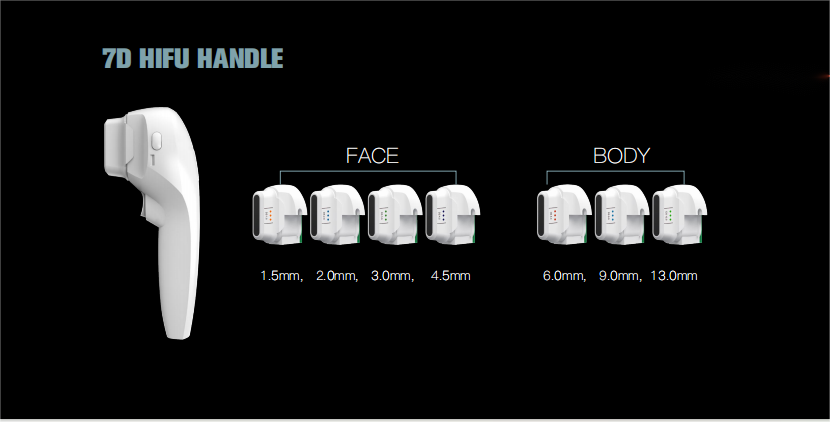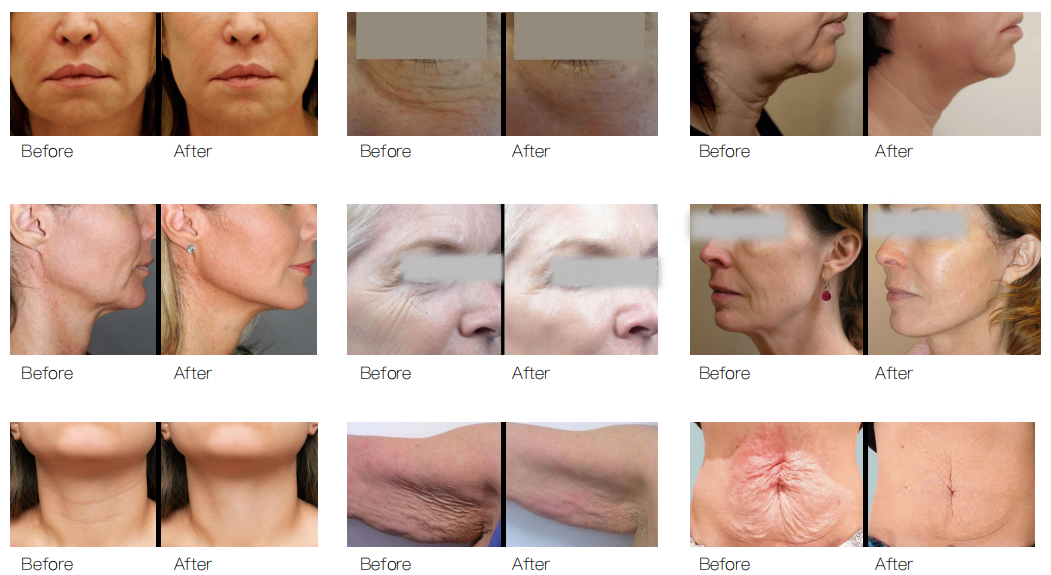In the field of non-invasive anti-aging, high-intensity focused ultrasound (HIFU) technology has become an important choice for modern medical aesthetics due to its significant skin tightening and lifting effect. With the iteration of technology, 4D and 7D HIFU have successively emerged – the former is known for its precise layered treatment of the epidermis, dermis, and SMAS fascia layer, while the latter claims to achieve more accurate energy localization and personalized design through intelligent multidimensional transducers and real-time imaging technology. Faced with these two technologies, both beauty seekers and clinical physicians urgently need to answer a core question: which key indicators such as efficacy persistence, comfort, and safety can bring more ideal youthful effects?
To analyze the differences between these two technologies in depth, it is necessary to start with the mechanism of action and clinical data. As a classic technology, 4D HIFU’s point line surface layered heating mode has been extensively clinically validated, especially in the SMAS layer lifting effect, showing excellent performance. The single treatment effect can be maintained for 12-18 months. The innovation of 7D HIFU lies in: firstly, adopting dynamic multi focus technology for more uniform energy distribution; Secondly, equipped with an intelligent temperature control system, the treatment depth can be adjusted in real time (7 levels adjustable within the range of 1.5-13mm); Thirdly, while reducing the treatment time by 30%, it claims to be able to extend the duration of the effect to 24 months. However, it is worth noting that as an emerging solution, the long-term efficacy of 7D technology still requires more evidence-based medical data support. Is this technological iteration a substantial breakthrough or a marketing concept? We will conduct objective comparisons from multiple dimensions.

4D Ultrasound Scalpel vs 7D Ultrasound Scalpel: A Comprehensive Comparison and Analysis in 7 Dimensions
Technical principles and development history
The 4D ultrasonic knife, as the third-generation HIFU technology, adopts the principle of high-energy focused ultrasound and acts on different layers of the skin through a single focal point layer by layer heating method. Its technical feature lies in the dot matrix energy release, which sequentially stimulates the epidermis, dermis, and SMAS fascia layer. The 7D ultrasonic knife is the fifth generation upgraded technology, which innovatively introduces a multi focus dynamic scanning system and intelligent temperature control technology while retaining the core principle of HIFU. It can achieve more accurate energy control and more uniform heat distribution. From the perspective of development history, 4D technology has a clinical application history of more than 10 years, and its safety and effectiveness have been fully verified; 7D technology, as a new product launched in the past three years, has significant advantages in intelligence, but its long-term effects still require more clinical data support.

Treatment depth and level control
In terms of treatment depth, the 4D ultrasonic knife offers three fixed depth options: 1.5mm (epidermal layer), 3.0mm (dermis layer), and 4.5mm (SMAS fascia layer). This design is suitable for dealing with moderate skin laxity issues, but has limited regulation of deeper tissues. The 7D ultrasonic knife offers 7 adjustable depths (1.5-13mm), which can not only accurately target traditional layers, but also shape the fat layer, making it particularly suitable for complex aging problems that require both skin relaxation and fat accumulation. Clinical data shows that 7D has a particularly prominent effect on improving the contour of the mandibular margin.

Treatment accuracy and safety
In terms of precision, 4D adopts single focus technology, requiring the operator to manually adjust the angle of the treatment head, which requires a high level of physician experience. 7D is equipped with a real-time imaging guidance system, which can intelligently identify skin layers and automatically avoid important nerves and blood vessels through multi focus dynamic scanning. Safety comparison shows that the intelligent temperature control system of 7D can control the skin temperature within a safe range, reducing the risk of burns by about 40% compared to 4D. However, it is worth noting that under the operation of experienced physicians, the difference in safety between the two techniques will be significantly reduced.
Treatment comfort experience
Pain is one of the most concerning issues for those seeking beauty. During 4D treatment, there will be a noticeable stinging and burning sensation, and it is usually necessary to apply surface anesthetics 30 minutes in advance. 7D has reduced pain by about 50% by optimizing energy pulse technology (using intermittent energy release mode), and some new models are also equipped with instant cooling systems to make the treatment process more comfortable. Clinical research shows that about 75% of participants believe that the treatment experience of 7D is significantly better than 4D, especially suitable for pain sensitive populations.
Durability and time to effect
From a clinical perspective, the effect of a single 4D treatment can usually be maintained for 12-18 months, and the peak of collagen regeneration occurs 3-6 months after treatment. Due to the use of a more advanced thermal stimulation mode, the effect maintenance period of 7D can be extended to 18-24 months, and the effective time can be advanced to about 1 month. However, it should be emphasized that the long-term effect data sample size of 7D is still relatively limited, while the 5-year follow-up data of 4D has confirmed its long-lasting anti-aging effect. For beauty seekers who pursue stability, 4D may be a more reliable choice.
Indications and population selection
4D is most suitable for people aged 35-50 who experience moderate skin laxity, especially for solving problems such as nasolabial folds and sagging apple muscles. 7D, due to its multi-level therapeutic ability, has a wider range of applications: it is suitable for early anti-aging needs around the age of 30 and can also solve the problem of deep relaxation in people over the age of 50. In addition, the unique deep mode (10-13mm) of 7D has unique advantages in reshaping the double chin and facial contours. But for those with thin or severely sagging skin, other treatment methods may need to be combined.
Price and cost performance analysis
In terms of price, the single treatment price for 4D is between 15000 and 25000 yuan, while for 7D it is 30% -50% higher. From a cost performance perspective, 4D is more attractive to beauty seekers with limited budgets and a focus on basic anti-aging; 7D is more suitable for high-end customers who pursue comfortable experience and comprehensive improvement. It is worth noting that some institutions may recommend 3-5 treatment sessions, and the actual total price difference may be even greater. Consumers are advised to choose medical institutions with legitimate equipment based on their own budget and needs.

In a comprehensive comparison, 7D is indeed better than 4D in terms of progressiveness technology, treatment comfort and comprehensive effect, especially suitable for beauty seekers who are sensitive to pain and have multiple aging problems. But 4D, with mature clinical data and relatively affordable prices, is still the cost-effective choice. The final decision should be based on factors such as personal skin condition, budget, and acceptance of new technologies. It is recommended to make the decision after a professional physician’s consultation. No matter which technique is chosen, postoperative care and regular maintenance are key to maintaining effectiveness.





